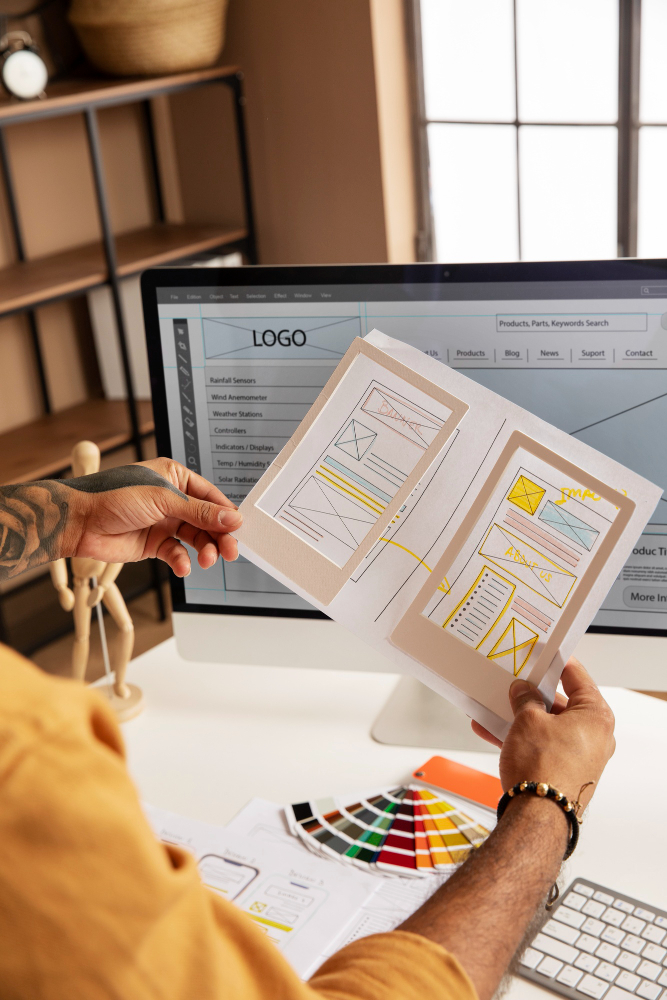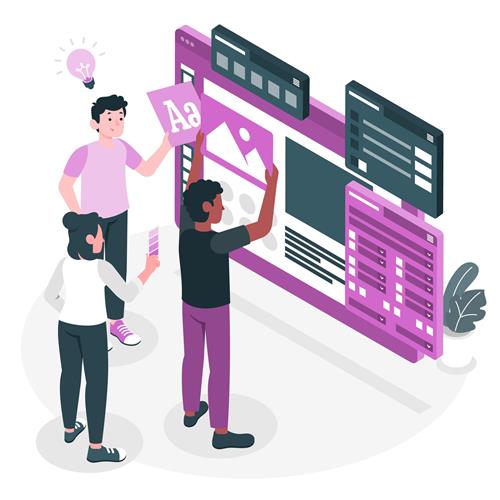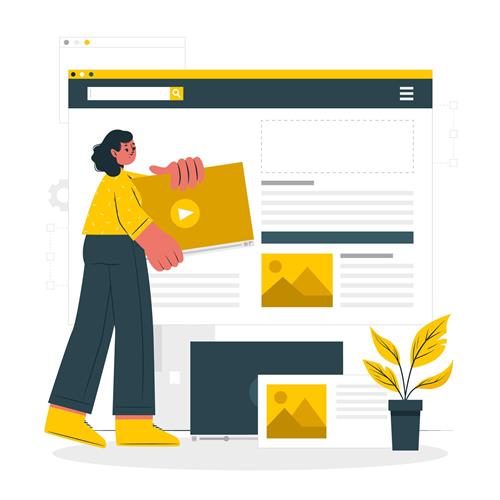Web design is a branch of design and belongs to digital marketing. He is responsible for designing websites focusing on the visual aspect and user experience.
In most cases, the appearance of your website is the first impression a future customer has of your business and can invite them to enter or leave.
Nowadays, more is needed to have a good product or service, but it is necessary to know how to offer it. This requires quality content with a quality design to accompany it.
 |
 |
Elements of Web Design
An important issue to keep in mind is that the content comes first, and the design must function as support for said content.
A website must not only be visually attractive, but it must also be attractive in content. A copywriter, a specialist in writing to conquer, empathize, and sell, is in charge of writing web texts.
Visual Style
The visual style of a website must be aligned with the corporate image of the company. It will depend on what the company wants to convey.
To do this, a corporate identity manual is usually created, where the logo, colors, fonts, size, etc. are accurately recorded.
Colors
A combination of colors that represent your brand and its values is essential.
Light colors make it easier to read, are a sign of neatness and organization, and tire the user less. While dark colors provide an elegant, even sophisticated tone, they are more tiring to the eye.
 Avoid loud or loud tones and not use them as a background; they can make the user experience unpleasant, and the user ends up leaving the website.
Avoid loud or loud tones and not use them as a background; they can make the user experience unpleasant, and the user ends up leaving the website.
I suggest reading a little about color psychology and looking for inspiration.
Typography
Fonts should be attractive as well as easy to read. The idea is to use 1 or 2 sources, no more. One for headings and highlights and another for everything else.
Be careful with very ornate letters; we do not want to divert attention but rather to be read. We will also use size and weight to stand out and attract attention.
Images
Images must be relevant to the website’s contents and of high quality. They provide lightness and dynamism to the website, but also complementary information.
Photography is a very important part of web design, and it should be done by a professional and an express session for the web.
Failing that and depending on the content, you can also go to free or paid high-quality image banks, such as Pixabay, Depositphotos, Unsplash, or Shutterstock, among others.
Animations and movements
Animations and movements are a growing web trend; they dynamically improve the user experience.
However, it is necessary to use it carefully to not overload the website and not excessively distract the user from paying attention to important things. Ideally, it should be at most 20% of the website.
Buttons and icons
Representative icons and clickable buttons help with navigation and understanding of the website.
I suggest highlighting elements that talk about your offers or offerings and, above all, those that indicate how you could solve the problems of your potential clients.
It is necessary to avoid the extra and consider the level of relevance and its hierarchy within the website.
Graphic Design vs Web Design
Although their difference may be very clear, this is only partially true. Many people, entrepreneurs, and companies believe they do the same job.
The graphic designer is in charge of any design created to be printed, such as brochures, newspapers, magazines, billboards, advertisements, books, logos, restaurant menus, merchandise, and much more.
He also uses technology in his work, which can be seen in digital and online media, not necessarily in print.
The web designer, as we mentioned at the beginning, is in charge of designing web pages, taking into account the visual aspects and the user experience.
They are close but different professions, although there are professionals who work and move through both disciplines with ease. Depending on what you need, you will choose one or the other.
Our choice of local designers – We Deliver Web Design…


 UX and conversion
UX and conversion
 Content
Content